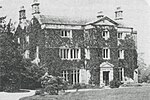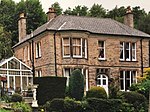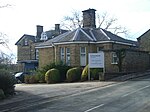Forge Dam Park
Parks in SheffieldPorter BrookUse British English from January 2020

Forge Dam Park is a park in Fulwood, in the city of Sheffield, South Yorkshire, England. Forge Dam Park is the fourth of the Grade II listed Porter Valley Parks, a connected series of parks (when travelling west from Sheffield city centre) along the course of the Porter Brook. The 49 acres (20 ha) park is on the site of the Old Mayhouse Farm and Forge Dam. It was acquired by the J G Graves Charitable Trust in 1938.
Excerpt from the Wikipedia article Forge Dam Park (License: CC BY-SA 3.0, Authors, Images).Forge Dam Park
Porter Brook Trail, Sheffield Fulwood
Geographical coordinates (GPS) Address Nearby Places Show on map
Geographical coordinates (GPS)
| Latitude | Longitude |
|---|---|
| N 53.361 ° | E -1.542 ° |
Address
Porter Brook Trail
Porter Brook Trail
S11 7FF Sheffield, Fulwood
England, United Kingdom
Open on Google Maps










